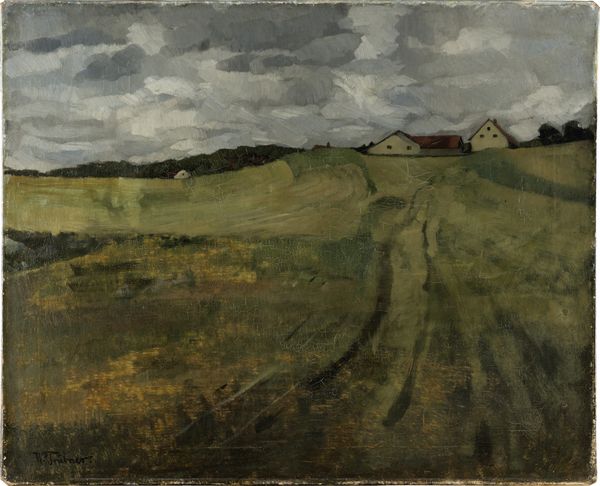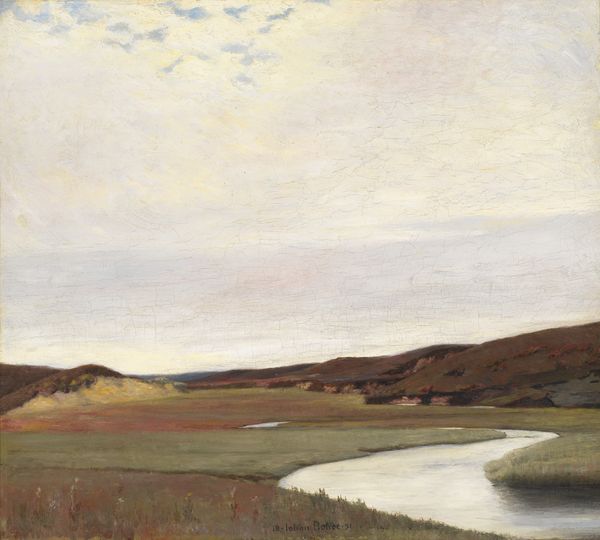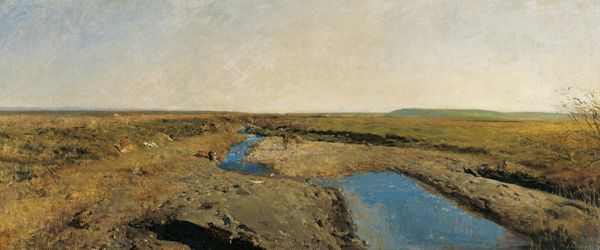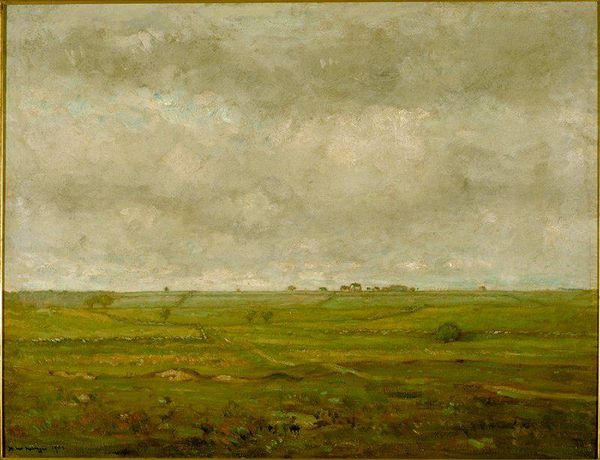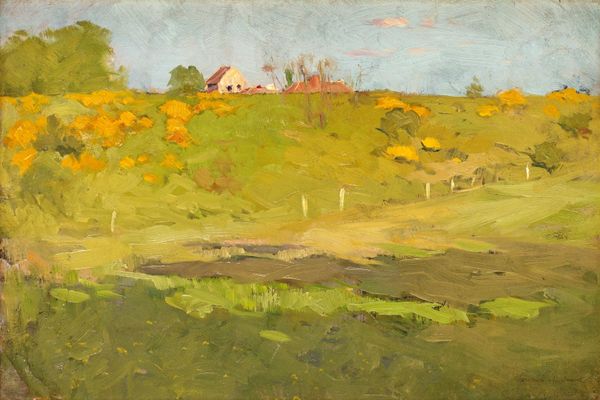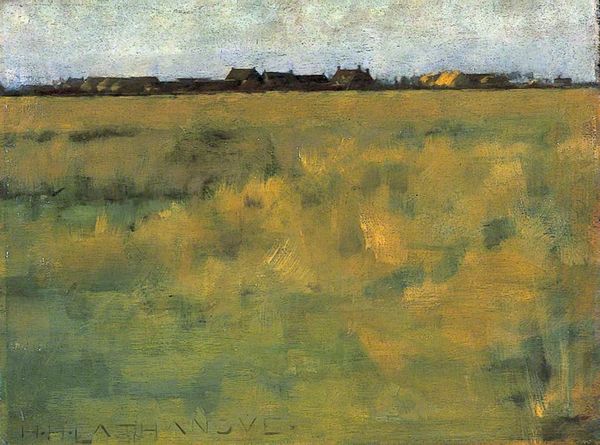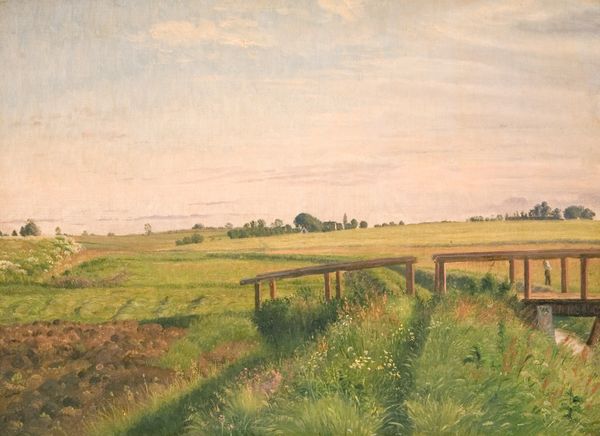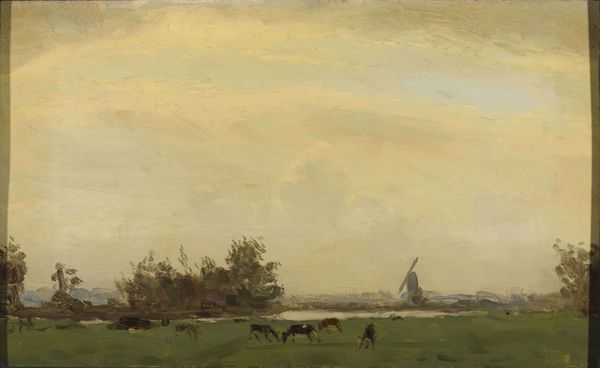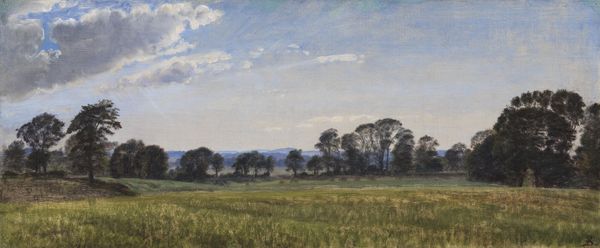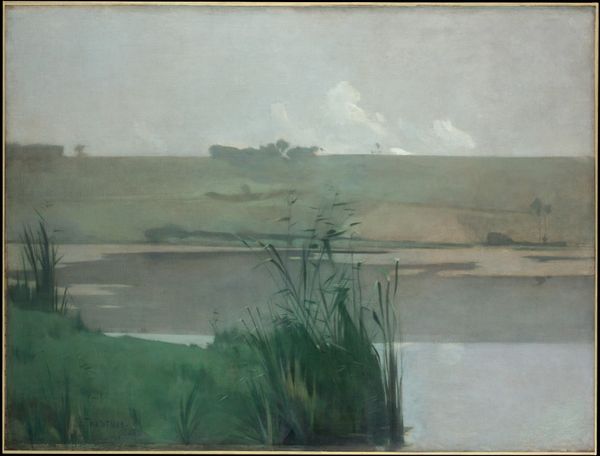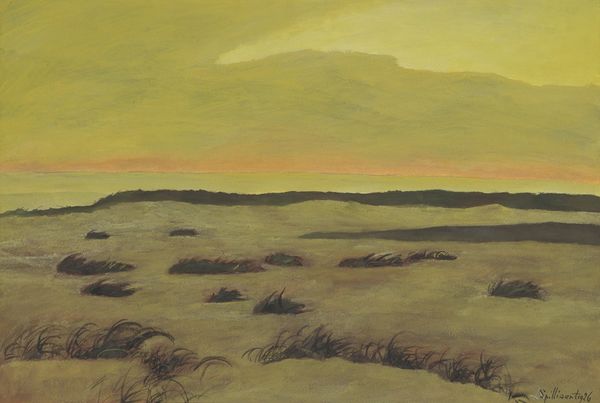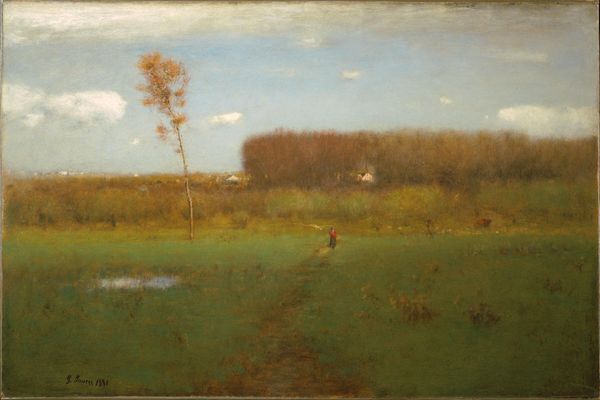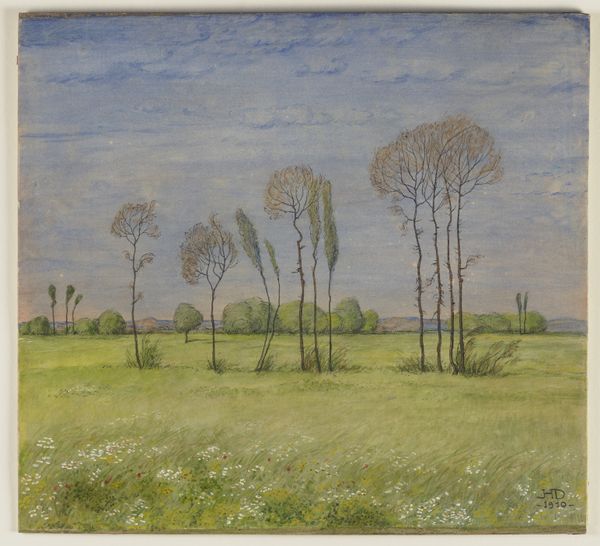
Dimensions: height 33 cm, width 66 cm, depth 13 cm
Copyright: Rijks Museum: Open Domain
Curator: Looking at "Landscape with fields" by Willem Witsen, made sometime between 1885 and 1922, currently held in the Rijksmuseum… What strikes you first? Editor: It’s undeniably somber. That grey sky presses down on the green, creating this feeling of stillness and perhaps… resignation? Curator: Witsen really captures the specific materiality of the Dutch landscape. You can almost feel the heavy clay soil and smell the dampness in the air, but the application seems quite intentional, not accidental at all. He used oil paint, likely "en plein air" - outside. This adds to its charm. Editor: Absolutely. And that’s where my interest sparks. Oil paint gives you such possibilities to build up layers of meaning, you know? To literally thicken the land and blur the sky. Those plough lines create almost these violent slashes across the otherwise subdued canvas, representing toil and labor perhaps. It all suggests the relationship of production of resources and the representation of this labor. Curator: And the distant windmill—such an enduring Dutch symbol—hints at both national identity and human intervention. These flat Dutch landscapes, reclaimed and maintained, required constant care. I see more of Dutch persistence here, a kind of quiet, grounded continuity. Windmills, for instance, evoke not just national identity but are a testament of time, ingenuity and adaptation. Editor: Perhaps, but aren't windmills also technologies tied to a particular historical mode of production? They are symbols, of course, but also material components in transforming landscape and exploiting resources. Curator: A fair point. What initially seemed like a simple scene unfolds to show deeper symbolic undercurrents reflecting labor, cultural endurance, and even subtle tensions. Editor: Exactly. From the materials themselves to the scenes represented, we can explore how art reveals processes both tangible and deeply human. It gives us a material depiction of what happens and stays in the earth!
Comments
No comments
Be the first to comment and join the conversation on the ultimate creative platform.
